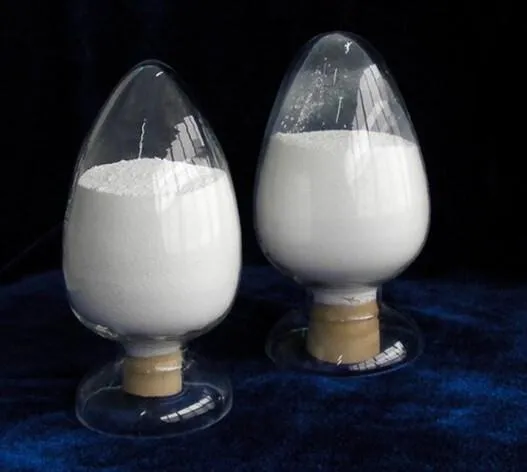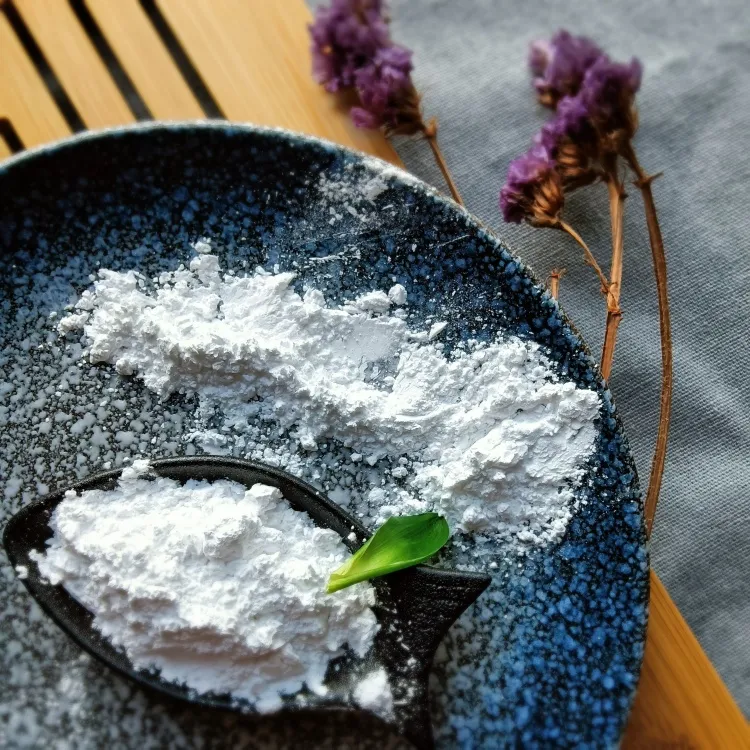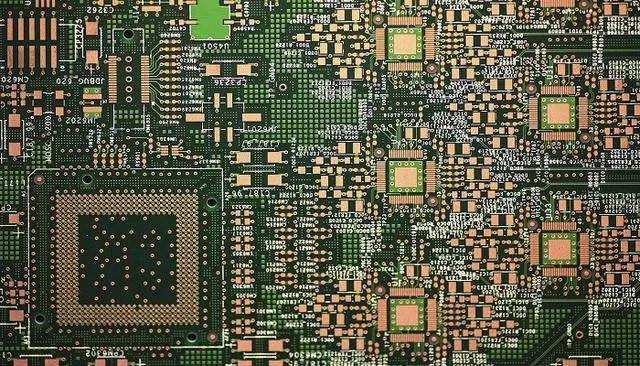plication of silica powder is extensive across various industries due to its unique properties. In construction, silica powder is a key ingredient in concrete and mortar. It boosts their strength and durability. Also, in electronics, it is essential for making semiconductors and insulators. Silica powder is used in making glass, ceramics, and paints. It improves their texture and finish. Furthermore, its use in food processing as an anti-caking agent highlights its versatility. Silica powder has diverse uses. It is valuable in many fields.
Silica powder is non-toxic, odorless and pollution-free. It has excellent properties. They are: high heat resistance, high insulation, low expansion, and good conductivity.
Silica powder is an inorganic, non-metallic material with excellent performance. It can be widely used in:
- copper clad laminates for electronic circuits,
- epoxy molding compounds for chip packaging, and
- electrical insulation materials, adhesives, ceramics, and coatings.
Its terminals are used in consumer electronics, aerospace, and wind power. They are also used in the automotive and defense industries.

Definition and properties of silica powder
The definition of silica powder
Silica powder is a kind of silicon dioxide powder material, obtained by processing natural quartz (SiO2) or fused quartz through following procedures: crushing, grinding, flotation, acid washing and purification, and high-purity water treatment and so on.
The properties of silica powder
In addition to excellent properties, such as low coefficient of thermal expansion , excellent dielectric properties, high thermal conductivity, and good suspension performance, silica powder also has the following properties:
Due to high purity and excellent electrical insulation of silica powder, the solidified silica powder has good insulation performance and arc resistance.
Silica powder can reduce the linear expansion coefficient and shrinkage rate of the solidified product, thereby eliminating the internal stress of the solidified product and preventing cracking.
Silica powder treated with silane coupling agent has good wettability to various resins with good adsorption and no agglomeration.
Adding silica powder into organic resin as a filler can not only improve properties of solidified products, but also reduce the product costs.
Classification of silica powder
| Electrical industry | 电子行业Electronics Industry | ||
| Ordinary silica powder | Ordinary active silica powder | Electronic grade crystalline silica powder | Electronic grade crystalline active silica powder |
| Electrical grade silica powder | Electrical grade active silica powder | Electronic grade fused silica powder | Electronic grade fused active silica powder |
According to the morphology of powder particles, silica powder can be divided into angular silica powder and spherical silica powder. According to different raw materials, angular silica powder can be divided into angular crystalline silica powder and angular fused silica powder. Compared with angular silica powder, spherical silica powder has greater advantages in filling, thermal expansion and wear resistance.

Silica powder used for integrated circuit copper clad laminates is mainly divided into five types: fused silica powder, crystalline silica powder, active silica powder, spherical silica powder and composite silica powder.
Fused silica powder
Fused silica powder is powder with amorphous silicon dioxide as raw material, formed with process of smelting at high temperatures and cooling and other procedures. Its molecular structure changes from an ordered arrangement to a disordered arrangement. It is white in color and has a high purity. At the same time, fused silica powder has following characteristics: extremely low linear expansion coefficient, good electromagnetic radiation performance and stable chemical properties and controllable particle size distribution.
Crystalline silica powder
Crystalline silica powder is made from selected high-quality quartz ore, through process of cleaning, crushing, magnetic separation, ultra-fine crushing and grading. Crystalline silica powder is white in color, pure in quality, with stable physical and chemical properties and controllable particle size distribution. Crystalline silica powder can be divided into high-purity crystalline silica powder, electronic-grade crystalline silica powder and general filler-grade crystalline silica powder.
Active silica powder
Active silica powder is a kind of silica powder modified by adding a proper amount of coupling agent to silica powder at an appropriate temperature. It is hydrophobic high-purity white powder of non-toxic, odorless and non-polluting. Because it has hydrophobic properties and can improve the mechanical and chemical properties of the mixture and the filling system, active silica powder can be widely used in defense technology and electronics.
Spherical silica powder
Spherical silica powder is with selected irregular angular silica powder as raw material, processed by high temperature near melting and near spherical method, to obtain a spherical silica powder material with uniform particles, small specific surface area, good fluidity, low stress and low bulk density.
Composite silica powder
Composite silica powder, also known as low-hardness silica powder, is a glassy silicon dioxide powder material made from natural quartz and other inorganic non-metallic minerals, such as calcium oxide, boron oxide and magnesium oxide, through processes such as compounding, melting, cooling, crushing, grinding and grading.
Production process of silica powder
Ore dressing and purification generally refer to crushing, screening and grinding siliceous raw materials with high impurity content, to fully dissociate silicon dioxide and impurities, then remove impurities through magnetic separation and flotation. Next, further reduce the impurities by acid washing, and wash away the acid solution with clean water. Finally, wash away the residual impurity ions adsorbed on the surface of the particles with deionized water, so that the raw material can reach or exceed chemical indicators for silicon micro powder, after drying, raw material for processing silicon micro powder is obtained.
Production methods for angular silica powder
There are two production methods for angular silica powder: dry grinding and wet grinding.
Production methods for spherical silica powder
At present, the production methods for spherical silica powder mainly include physical method, chemical method and physical and chemical method. Among them, the physical method mainly includes flame spheronization method, high temperature melt spraying method, plasma method and high temperature calcination spheronization method. The chemical method mainly includes gas phase method, hydrothermal synthesis method, self-propagating low temperature combustion method, sol-gel method, precipitation method and microemulsion method.
Modification of silica powder
The commonly used modification methods for silica powder mainly include coating modification, dry modification, wet modification and composite modification.
Coating modification
Coating modification mainly according to both characteristics of the surface of silica powder and the functional groups in the structure of polymer materials, to coat the surface of silicon micro powder. After coating modification, a thin film of organic polymer material will form on the surface of silica powder. The purpose of surface modification of silica powder is achieved through this “thin film”. Coating modification is a commonly used method to change the physical and chemical properties of the powder surface.
Dry modification
Dry modification is to disperse silica powder in the modification equipment in a relatively dry state, with adding a certain amount of surface modifier. Compared with coating modification, dry modification is with simple process and low cost. Currently, it is the main method for modification of silica powder in China, and is suitable for micron-level silica powder.
Wet modification
Wet modification means wetting the surface of silica powder under liquid phase conditions, to reduce the surface binding energy, then add a certain amount of surface modifier and additives, stirring and dispersing at a certain temperature, to achieve surface modification of silica powder. The wet modification method can make silica powder and modifiers easier to disperse and combine, but wet modification requires the removal of moisture from the powder, so the process is complex and the cost is high. This method is more suitable for the modification of ultrafine silica powder with particle size less than 5μm.
Composite modification
The composite modification method refers to the method that adding modifiers to powders during fine grinding, which can complete the integrated grinding and modification of powders. Composite modification is simple process and easy to operate. In addition, the modifier can enhance the crushing ability of grinding media, thereby improving modification efficiency. However, the heat generated during grinding process will lead to decompose and volatilize of modifiers, affecting the modification effect.
Application of silica powder
Copper clad laminate
Silica powder is a functional filler. When added to copper-clad laminate, it can improve many properties. It will enhance insulation, thermal conductivity, and acid and alkali resistance (except HF). It will also improve wear resistance and flame retardancy. It will increase bending strength and dimensional stability, and reduce thermal expansion. Finally, it will improve the dielectric constant of the laminate.

Epoxy Molding Compound
Silica powder is an important component of epoxy molding compound, with a mass fraction of more than 70%. As a filler, silica powder can significantly reduce the linear expansion coefficient of epoxy molding compound and greatly improve the reliability of electronic products.
Rubber
In rubber production, adding some inorganic fillers can cut costs. It can also improve the physical and dynamic mechanical properties of rubber composites. As a filler, silica powder can enhance rubber composites. Its small particles, high surface area, and heat and wear resistance enhance its wear resistance, tensile strength, and modulus.
Plastics
Silica powder can be used as a filler in polyethylene, polyvinyl chloride, polypropylene and polyphenylene ether during the production of plastics.
Coatings
In coating industry, silica powder can improve the corrosion resistance, wear resistance, insulation and high temperature resistance of coatings. Silica powder has always played an important role in coating fillers due to its good stability.
Electrical insulation materials
Electrical insulation materials are widely used in power transmission, rail transportation, aerospace, wind energy and nuclear energy. As a filler, silica powder can effectively improve the mechanical and electrical properties of electrical insulation materials.
Conclusion
In recent years, the application of silica powder is becoming more and more extensive in various industries, and its market scale maintain a rapid growth trend. At the same time, the growth in application put forward higher requirements on the performance of silica powder. We have found that the performance of silica powder can be improved to a certain extent by grading and modifying silica powder. Qingdao Epic Powder Machinery Co., Ltd. focuses on production of powder machinery. Classifying and modifying machine for non-metallic mineral processing from Qingdao Epic have good reputation among customers. If you have any relevant needs, please feel free to contact.
